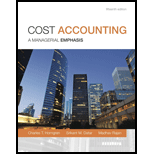
Five-step decision-making process:
Five-step decision-making process not only help in planning the various activities of the organization but also in evaluating performance and taking corrective measures when there is a deviation from the charted path.
The five-step decision-making process is explained as below:
Identify the problems and uncertainties: It involves identifying the loopholes that act as a bridge between the expected and actual results. Proper diagnosis helps in bringing out the problem involved and finding out the remedial measures.
Obtain information: It involves acquiring information about a problem before making a decision. It assists managers to attain better understanding of the uncertainties. Information can be gathered from different sources, like internal sources, customers, internet, competitors, etc, Information may be current prices of materials, labor, selling price of the product, and current demand.
Make prediction about the future: On the basis of the information gathered, it is significant to make predictions about the future. This requires correct judgments. Accountants should not be biased in making a judgment. Prediction can be related to the prices of materials, labor, and current demand.
Make decision by choosing among alternatives: When making decisions, strategy plays an important role. People in different parts of the company at different times are involved in making decisions. Stability with strategy helps individuals and timelines bind together thereby providing a common purpose for disparate decisions. Aligning decisions with strategy helps an organization to implement its strategy and attain its goals.
Implement the decision, evaluate performance, and learn:
To classify: The given actions as a step in the five-step decision-making process.
Want to see the full answer?
Check out a sample textbook solution
Chapter 1 Solutions
Cost Accounting, Student Value Edition (15th Edition)
- Do fast answer of this accounting questionsarrow_forwardWhich of the following is the most appropriate way to display liabilities on the balance sheet? a. alphabetically by payee b. relative likelihood of payment c. nearness to maturity d. All of these answer choices are correct.arrow_forwardCan you help me with accounting questionsarrow_forward
- For which of the following would year-end accrual of a current liability be optional? a. Current portion of a long-term lease obligation that comes due next year b. A declared property dividend c. Sick pay benefits that accumulate but do not vest d. Short-term debt that is being refinanced on a long-term basisarrow_forwardQuick answer of this accounting questionsarrow_forwardSwifty Supply Co. has the following transactions related to notes receivable during the last 2 months of 2027. The company does not make entries to accrue interest except at December 31. Nov. 1 Loaned $30,000 cash to Manny Lopez on a 12 month, 10% note. Dec. 11 Sold goods to Ralph Kremer, Inc., receiving a $85,500, 90-day, 8% note. 16 Received a $87,840, 180 day. 10% note to settle an open account from Joe Fernetti. 31 Accrued interest revenue on all notes receivable. (a) Journalize the transactions for Swifty Supply Co. (Ignore entries for cost of goods sold.) (Credit account titles are automatically indented when amount is entered. Do not indent manually. Use 360 days for cal in the order presented in the problem. List all debit entries before credit entries.) Date Account Titles and Explanation Debit Creditarrow_forward
- Hi expert please give me answer general accounting questionarrow_forwardHoward James started a business in 2011 in Jamaica and has been operating in the wholesale/retail industries, where he buys and sells household items to the local market. In 2012, he expanded his business operations and opened two other businesses in Trinidad and Tobago and Antigua and Barbuda, respectively. The annual sales of the respective businesses in 2015 are: Jamaica: J$3,000.00 Trinidad and Tobago: TT$251,000.00 Antigua and Barbuda: $299.00 Mr. James failed to register his business for VAT/GCT as specified by the respective Sales Tax Acts and Regulations. He stated that there is no need for his businesses to be registered because their sales are under the VAT thresholds and thus not required to be registered. a) You are to advise Mr. James if his decision not to register his businesses is justifiable. b) Search the respective VAT Acts for the 3 countries and advise Mr. James of the benefits of being a registered taxpayer; also the penalties for not registering for VAT/GCT.arrow_forwardGet correct answer general accounting questionarrow_forward

 AccountingAccountingISBN:9781337272094Author:WARREN, Carl S., Reeve, James M., Duchac, Jonathan E.Publisher:Cengage Learning,
AccountingAccountingISBN:9781337272094Author:WARREN, Carl S., Reeve, James M., Duchac, Jonathan E.Publisher:Cengage Learning, Accounting Information SystemsAccountingISBN:9781337619202Author:Hall, James A.Publisher:Cengage Learning,
Accounting Information SystemsAccountingISBN:9781337619202Author:Hall, James A.Publisher:Cengage Learning, Horngren's Cost Accounting: A Managerial Emphasis...AccountingISBN:9780134475585Author:Srikant M. Datar, Madhav V. RajanPublisher:PEARSON
Horngren's Cost Accounting: A Managerial Emphasis...AccountingISBN:9780134475585Author:Srikant M. Datar, Madhav V. RajanPublisher:PEARSON Intermediate AccountingAccountingISBN:9781259722660Author:J. David Spiceland, Mark W. Nelson, Wayne M ThomasPublisher:McGraw-Hill Education
Intermediate AccountingAccountingISBN:9781259722660Author:J. David Spiceland, Mark W. Nelson, Wayne M ThomasPublisher:McGraw-Hill Education Financial and Managerial AccountingAccountingISBN:9781259726705Author:John J Wild, Ken W. Shaw, Barbara Chiappetta Fundamental Accounting PrinciplesPublisher:McGraw-Hill Education
Financial and Managerial AccountingAccountingISBN:9781259726705Author:John J Wild, Ken W. Shaw, Barbara Chiappetta Fundamental Accounting PrinciplesPublisher:McGraw-Hill Education





